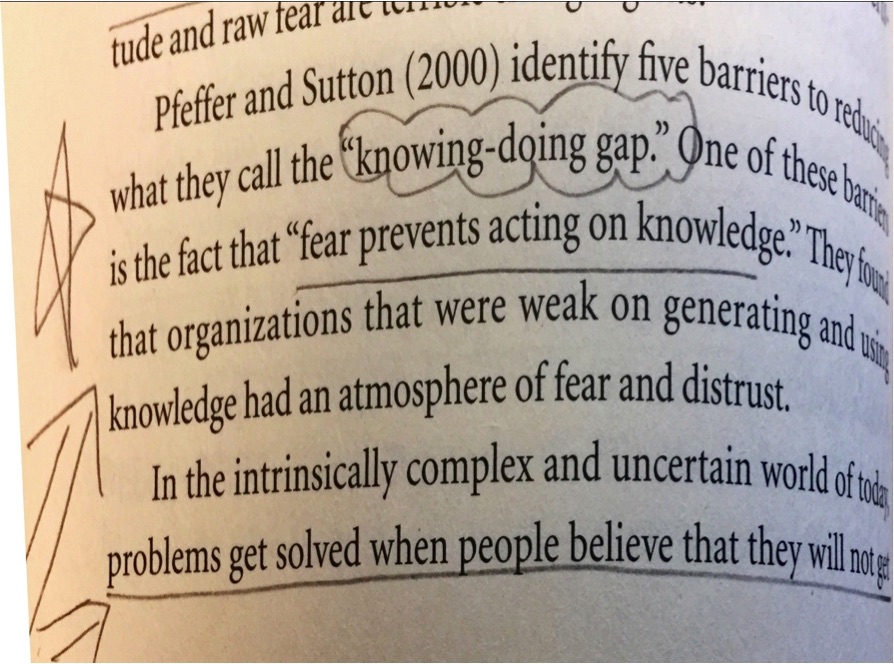 Every once in a while, it’s good to pick up an “oldie but goody” book to reread. That’s exactly what I did recently after someone mentioned Michael Fullan’s Six Secrets of Change. The book was published in 2008. I loved it then and it was definitely due a “re-read.”
Every once in a while, it’s good to pick up an “oldie but goody” book to reread. That’s exactly what I did recently after someone mentioned Michael Fullan’s Six Secrets of Change. The book was published in 2008. I loved it then and it was definitely due a “re-read.”
True to Fullan’s philosophy, Six Secrets focuses on moral purpose, specifically in organizations like schools, but also in companies as well. In fact, Fullan begins the preface by noting the book is the second one he’s written where he examined both business and education examples. And, that makes sense. Whether you work in a school district or a business (or a non-profit like A+), you will be dealing with people: your colleagues, students and parents (your customers), or related stakeholders.
 In this day where rancor seems to reign, I found Six Secrets of Change to be both refreshing and a valuable reminder about the importance of being intentional as we engage with others in meaningful and humble ways. (Hear Fullan highlight the book in this 2009 clip.)
In this day where rancor seems to reign, I found Six Secrets of Change to be both refreshing and a valuable reminder about the importance of being intentional as we engage with others in meaningful and humble ways. (Hear Fullan highlight the book in this 2009 clip.)
It’s Both-And, Not Either-Or
Throughout the book, Fullan reminds us that most choices we face should be viewed as “both-and” opportunities, instead of opting for one choice over the other. As an example, he reminds us that we shouldn’t have to choose between loving your employees or loving your students/customers. And, he eschews the choice between bottom-up or top-down strategies, suggesting that a good strategy considers both.
At other times, he encourages us to embrace seeming paradoxes such as the importance of being both self-confident and intellectually humble. In another example, early on in the book, he calls upon change gurus Pfeffer and Sutton, best known for writing about the “knowing-doing gap”:
If you master the six secrets, you will approach change with new found confidence, reflecting Pfeffer and Sutton’s elegant definition of wisdom: “the ability to act with knowledge, while doubting what you know” (p. viii).
 from Michael Fullan’s Six Secrets workshop handout. Download it here.
from Michael Fullan’s Six Secrets workshop handout. Download it here.
The Six Secrets
For those of you who don’t like “touchy-feely” things, don’t be turned off by Secret 1. Fullan explains that the way we can love our employees is to enable them to “learn continuously and to find meaning in their work and in their relationship to coworkers and to the company as a whole” (p. 12). In other words, act on strategies that help ensure employees feel valued, nurtured, and successful in our enterprise.
The book is a short but powerful read. At only 135 pages, it can be read in one sitting, if desired. Rather than summarize all six secrets, I’ve selected the three that directly connect to networking with others: Secrets 2, 3, and 4.
Secret 2: Connect Peers with Purpose
Intentional networking can be powerful. Fullan observes: “…show me a cohesive, creative organization, and I’ll show you peer interaction all the way down” (p. 43). Fullan describes three outcomes of positive and purposeful peer interaction:
(1) Alignment of the district or school’s values with their employees;
(2) Intentional sharing of information, knowledge and effective practice; and
(3) Monitoring that exists not only to identify and address problems, but also to capture and spread effective practices (p. 45).
As you read the book, you will quickly notice the interconnectivity of the six practices. Connect peers with purpose (Secret 2) depends on learning is the work (Secret 4). Successful peer interaction depends on the development of “high-capacity” knowledge and skills.
 Fullan’s Secret 2 really validates the ABPC Networks experience: “When district leaders participate in a network with other districts, they become interested in the success of other districts, and indeed the [public education] system as a whole “(p. 50).
Fullan’s Secret 2 really validates the ABPC Networks experience: “When district leaders participate in a network with other districts, they become interested in the success of other districts, and indeed the [public education] system as a whole “(p. 50).
I’m constantly hearing this from participants in the Key Leaders Network, the Powerful Conversations Network and Instructional Partners Network. Intentional peer interaction builds both knowledge and “connectedness” to others. One only need to point to the countless inter-district exchanges and collaborations that have been seeded by participation in the ABPC networks to prove Fullan’s point.
Secret 3: Capacity Building Prevails
Years ago, at an A+ Education Partnership board meeting, one of our non-educator members was baffled by the term “capacity-building” (often used in business as well). If Fullan had been present, he would have defined it more eloquently than I did by noting that capacity building strategies exist to help educators “continue to develop knowledge and skills.” Capacity building also involves using resources (time, ideas, expertise, money) wisely and making a commitment to get important things done collectively and continuously (p. 57).
Calling on Pfeffer and Sutton again, Fullan notes that capacity building helps bridge the knowing-doing gap by creating a safe environment for employees to try out what they are learning.
If you were to look at my copy of Fullan’s book, you’d see stars, underlining, and other annotations around this specific section. It’s so important — unless district and school leaders are clear that making mistakes is part of deep learning and inevitable as we implement new ways of doing things, capacity building will stall.
Secret 4: Learning is the Work
Quoting another one of my favorite education thought-leaders, Richard Elmore, Fullan reminds us that “improvement is more a function of learning to do the right thing in the setting in which you work” (Elmore, 2004, p. 72; Fullan p. 86). Job-embedded professional learning helps educators both understand AND implement what they are learning. It is critical for districts and schools to provide time and support to teachers and administrators to learn on the job. “Improvement” is the natural consequence when we do this right.
Fullan yearns for a future time when the success of a supervisor is always measured by the success of the people that they have taught.
The Six Secrets is Not Just About Change. . .
Educators spend a tremendous amount of time doing their important work, and Fullan believes that this time should be mostly joyful and meaningful. He concludes with this admonition from Jonathon Haidt, author of The Happiness Hypothesis: “People need love, work, and a connection to something larger” to find satisfaction and happiness.
To paraphrase Haidt and Fullan, it’s worth striving to get the right relationship between yourself and others, between yourself and work, and between yourself and something larger than yourself.
Because when we get these relationships right, a sense of purpose will emerge that will carry us and all those with whom we work forward on a joyful and rewarding journey.
Good article: Most important of all, the intellectually humble are more likely to admit it when they are wrong. When we admit we’re wrong, we can grow closer to the truth. https://t.co/cMGqOuWf9G @al_bpc @aplusala #alpartners
— Cathy Gassenheimer (@cathygassenheim) January 14, 2019


0 Comments on "Revisiting Michael Fullan’s Six Leadership Secrets for Educators"